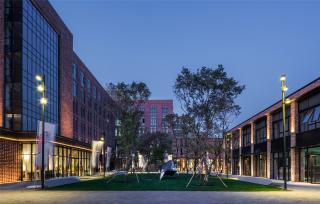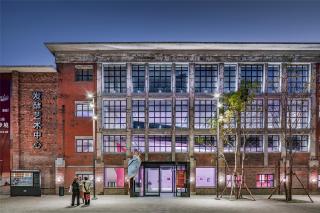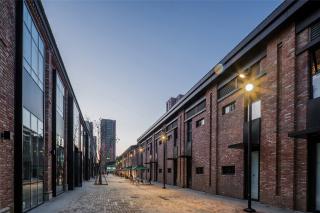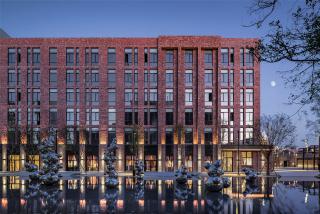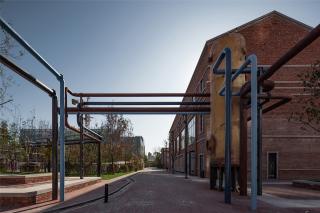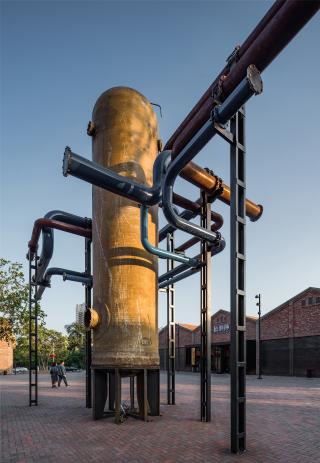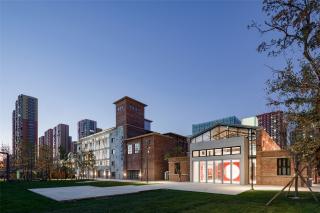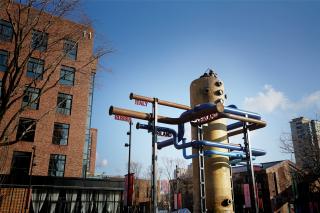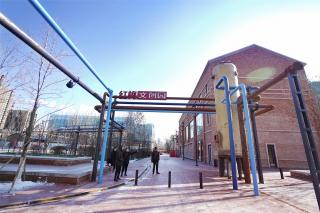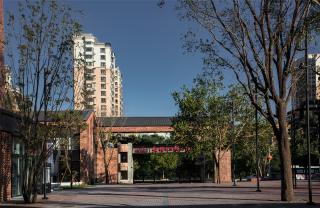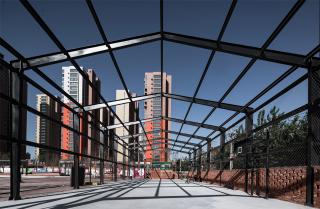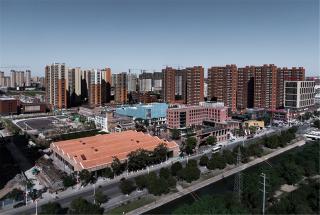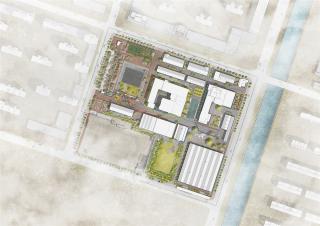“一個(gè)歷史的場(chǎng)所�����,一個(gè)未來(lái)的場(chǎng)所”
“A place of history – a place for the future”
沈陽(yáng)紅梅味精廠始建于上世紀(jì)30年代末,從前味精在這里生產(chǎn)加工��,再被分銷到中國(guó)各地乃至世界各國(guó)�。隨著新世紀(jì)的到來(lái),紅梅企業(yè)關(guān)停����,老廠區(qū)經(jīng)歷了短暫荒置后,沈陽(yáng)萬(wàn)科以文創(chuàng)園的方式為這個(gè)經(jīng)歷了八十年歲月的老廠房注入了新的生命��。紅磚建筑經(jīng)過(guò)翻修改造重新呈現(xiàn)于大眾眼前���,老廠區(qū)原有的樹(shù)木被盡可能地保留下來(lái)�����,新建筑也以一種與老建筑協(xié)調(diào)的風(fēng)格加入到園區(qū)中�����。
The site in Hongmei, where glutamates were produced in an industrial fermentation process, packed and shipped to the whole of China and overseas from 1939 to 2014, is being developed by VANKE China into a unique cultural quarter. Some of the impressive 20th century factory buildings will be restored, the existing vegetation preserved and new architecture in the traditional style added.
▼文創(chuàng)園鳥(niǎo)瞰
Aerial view ?? SHENYANG VANKE
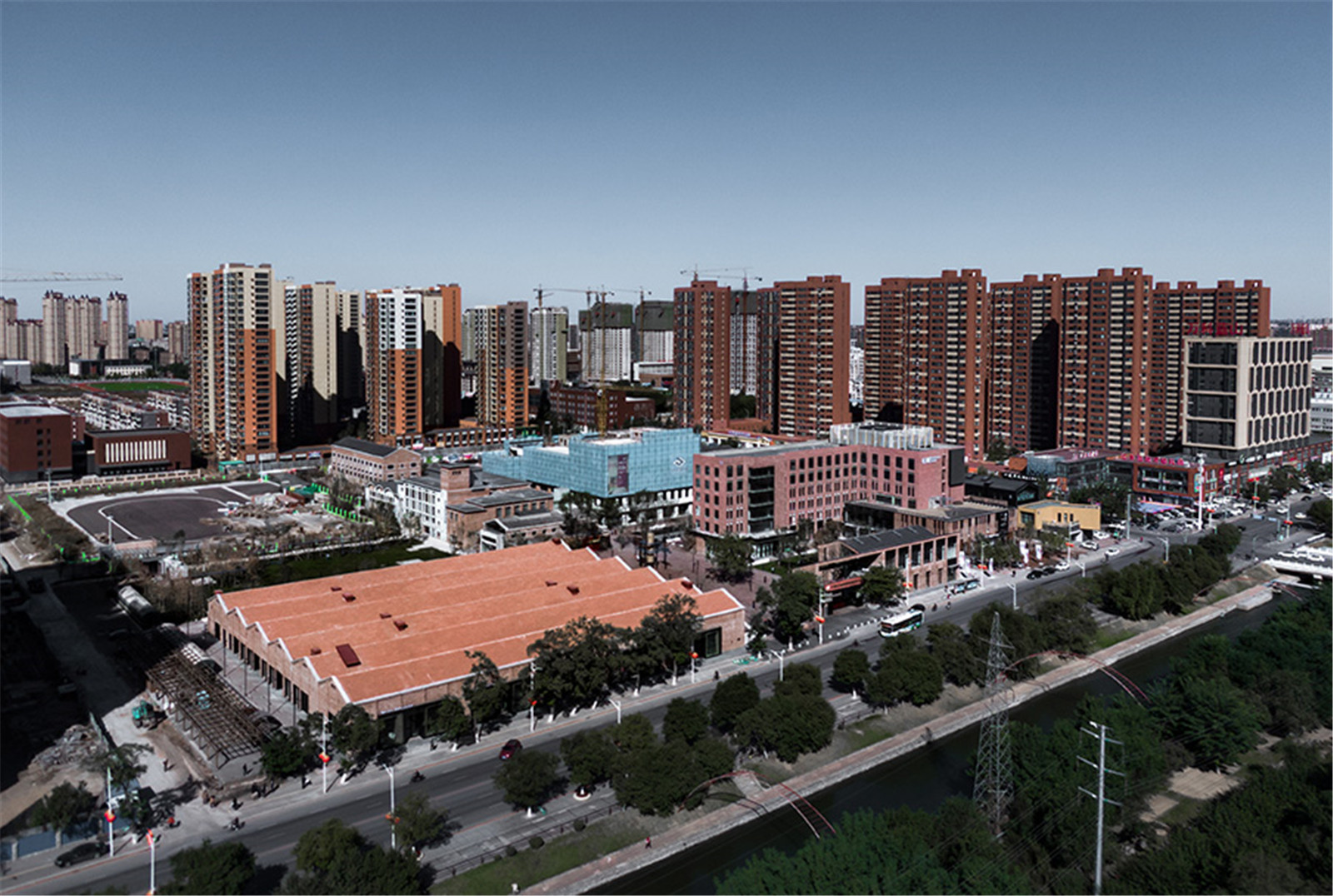
▼總平面圖
Master plan ?? LATZ+PARTNER
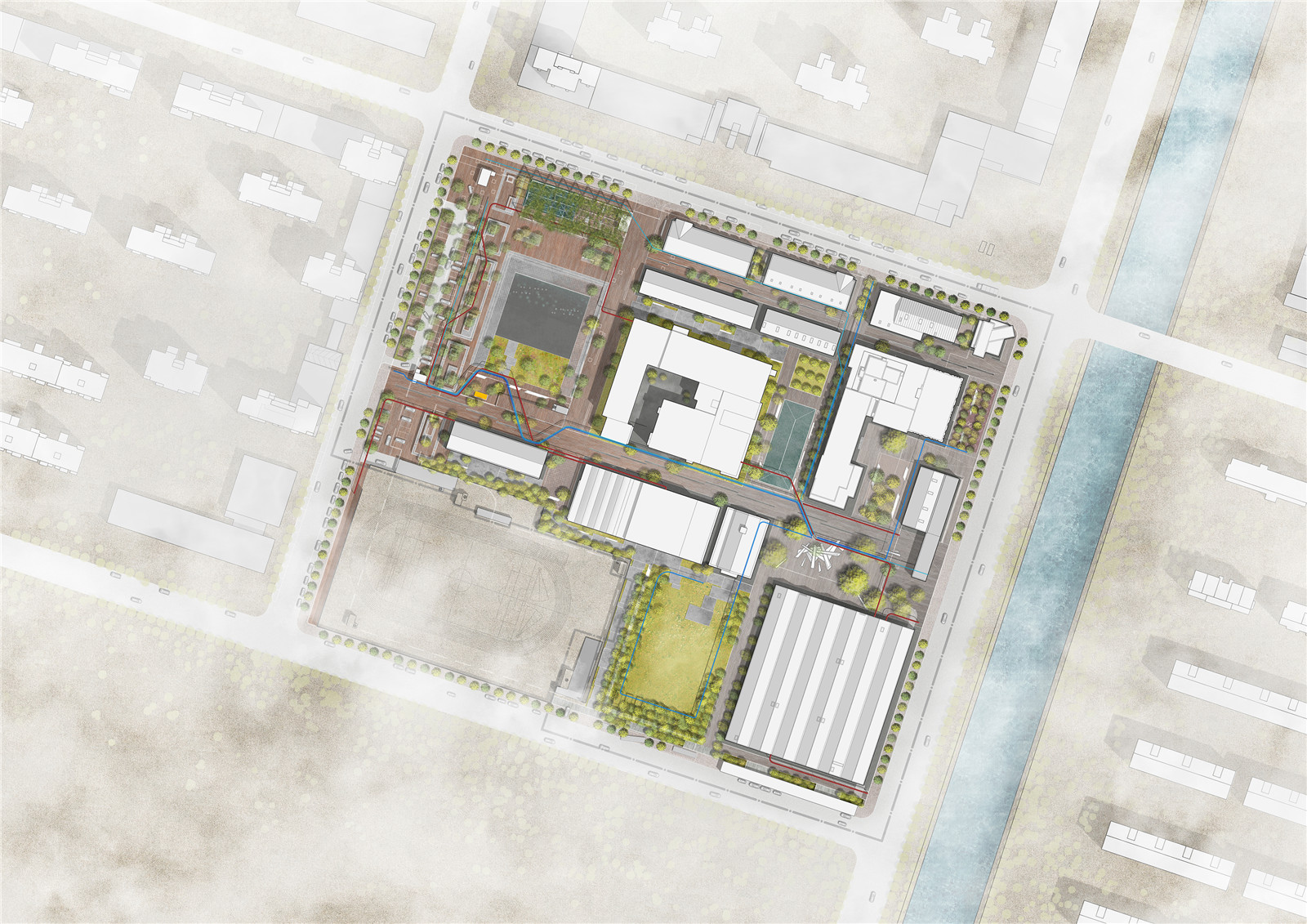
在紅梅文創(chuàng)園的景觀設(shè)計(jì)過(guò)程中���,我們希望園區(qū)內(nèi)的歷史建筑可以充當(dāng)營(yíng)造開(kāi)放空間氛圍的重要角色��,而風(fēng)格統(tǒng)一的新建筑則作為聯(lián)系不同空間的補(bǔ)充元素�。我們用現(xiàn)代且與建筑風(fēng)格相協(xié)調(diào)的景觀語(yǔ)言重新整合廠區(qū)內(nèi)的開(kāi)放空間�,創(chuàng)造多種多樣的空間體驗(yàn),以未來(lái)文創(chuàng)園的業(yè)主以及游客為服務(wù)主體��,為其提供適合其功能需求的場(chǎng)地����。
每一個(gè)主要建筑前都設(shè)置了廣場(chǎng)或主軸干道,作為建筑內(nèi)部空間的延申�����,為園區(qū)中同時(shí)舉辦多個(gè)活動(dòng)提供可能性�����,服務(wù)于建筑的使用者�����。同時(shí)老建筑也以其極具特色的歷史結(jié)構(gòu)���,豐富著這些廣場(chǎng)空間的氛圍�����,讓人置身其中時(shí)印象深刻流連忘返�����。
We want to support this strong architectural stance with our complementary concept for the exterior spaces. The new building ensemble should form a legible and coherent spatial figure, using only a few design ele-ments that are derived from the existing buildings. The contemporary landscape scheme provides a variety of spatial experiences, structures the site and delivers a specific range of functions for future cultural institutions and visitors to the site.
In front of each building is a square or a spacious promenade, offering space for several events to be staged, accessed and supplied simultaneously. Interior and exterior spaces are connected; all spaces are developed from and with the historical structure of the complex and thus reinforce its impact.
▼主軸線上的新老建筑對(duì)比
Comparison of new and old buildings on the main axis ?? SHENYANG VANKE
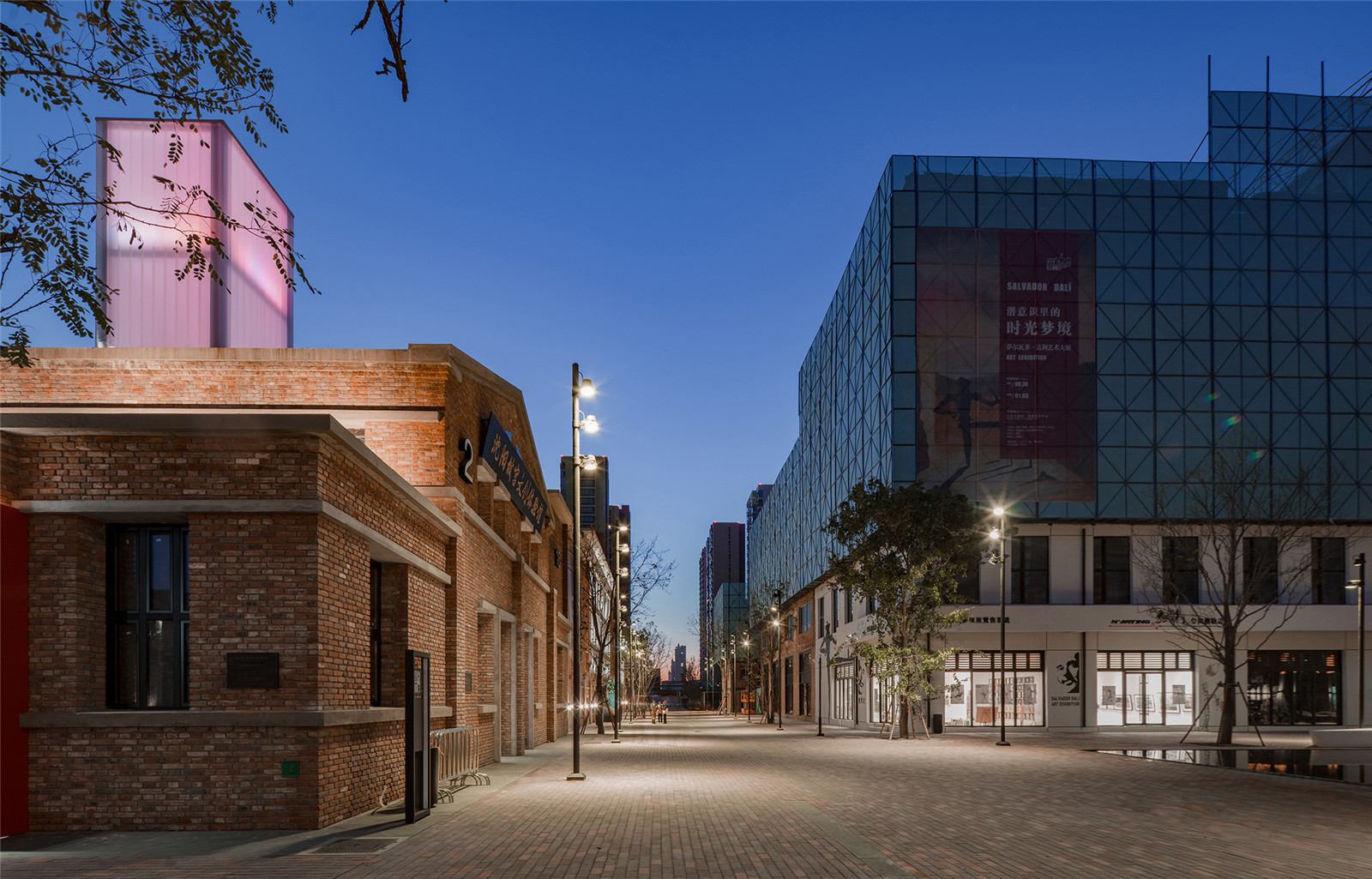
紅梅就是這樣在這個(gè)中國(guó)北方的現(xiàn)代化大都市沈陽(yáng)中����,不僅為沈陽(yáng)市民的文化生活提供多樣的場(chǎng)所����,也為鄰里社區(qū)街坊的日常生活提供一個(gè)特別的休閑娛樂(lè)去處。
An exceptional urban situation is being created at Hongmei, a northern metropolis with a population of mil-lions, which will not only create a suitable space for future cultural activities, but also provide people living in the surrounding skyscrapers with a special place to spend their leisure time.
延續(xù)現(xiàn)有遺存���,謹(jǐn)慎地添磚加瓦
Developing the existing fabric – with sensitive additions
磚��,作為最主要的硬質(zhì)鋪裝貫穿園區(qū)的外部空間����,不僅僅足夠堅(jiān)實(shí)為多種活動(dòng)提供場(chǎng)所�,從顏色以及材質(zhì)上與現(xiàn)存的建筑呼應(yīng)著��,從外部空間上進(jìn)一步將新老建筑融合���,將園區(qū)中的所有建構(gòu)筑物連接成一個(gè)整體,同時(shí)溫和地強(qiáng)調(diào)著紅梅與周圍現(xiàn)代街區(qū)的不同����,也突出了紅梅的工業(yè)歷史特質(zhì)。磚鋪面自東往西�����,顏色由棕色向磚紅色不規(guī)則漸變����,將城市發(fā)展的紛呈變化和歷史發(fā)展的時(shí)間印記巧妙地融為一體,似乎也輕輕地訴說(shuō)著過(guò)往����,也承接著未來(lái)。
樹(shù)木���,被盡可能保留下來(lái)。現(xiàn)存樹(shù)木和新植的楓樹(shù)��,銀杏,槐樹(shù)等以另外一種形式重新塑造了空間��。在開(kāi)放空間中樹(shù)木或陣列栽植����、或自由散植,以此塑造了空間氛圍并滿足了場(chǎng)地的使用需求�。
A continuous mineral surface made of brick creates a robust and versatile surfacing whose colour and texture matches the old and new materials of the buildings and emphasises a harmonious contrast to the modern envi-ronment – thus an “identification surface” is created. The colour of the brick changes from grey in the east to a light red in the west this highlights the urban diversity within the complex and reflects the traces of time in a positive way. Any future changes in use or structural conversions will be easy to integrate.
The existing maple, ginkgo and pagoda trees will be supplemented by related species and help define new spaces within the site. Some are densely planted, others free-standing specimen trees, which continue the pro-portions of the existing buildings and develop an attractive sequence of squares, each with its own individual design and spatial concept.
▼ 保留下來(lái)的入口處樹(shù)木,以新的形式重塑了空間
The existing trees help define new spaces ?? SHENYANG VANKE
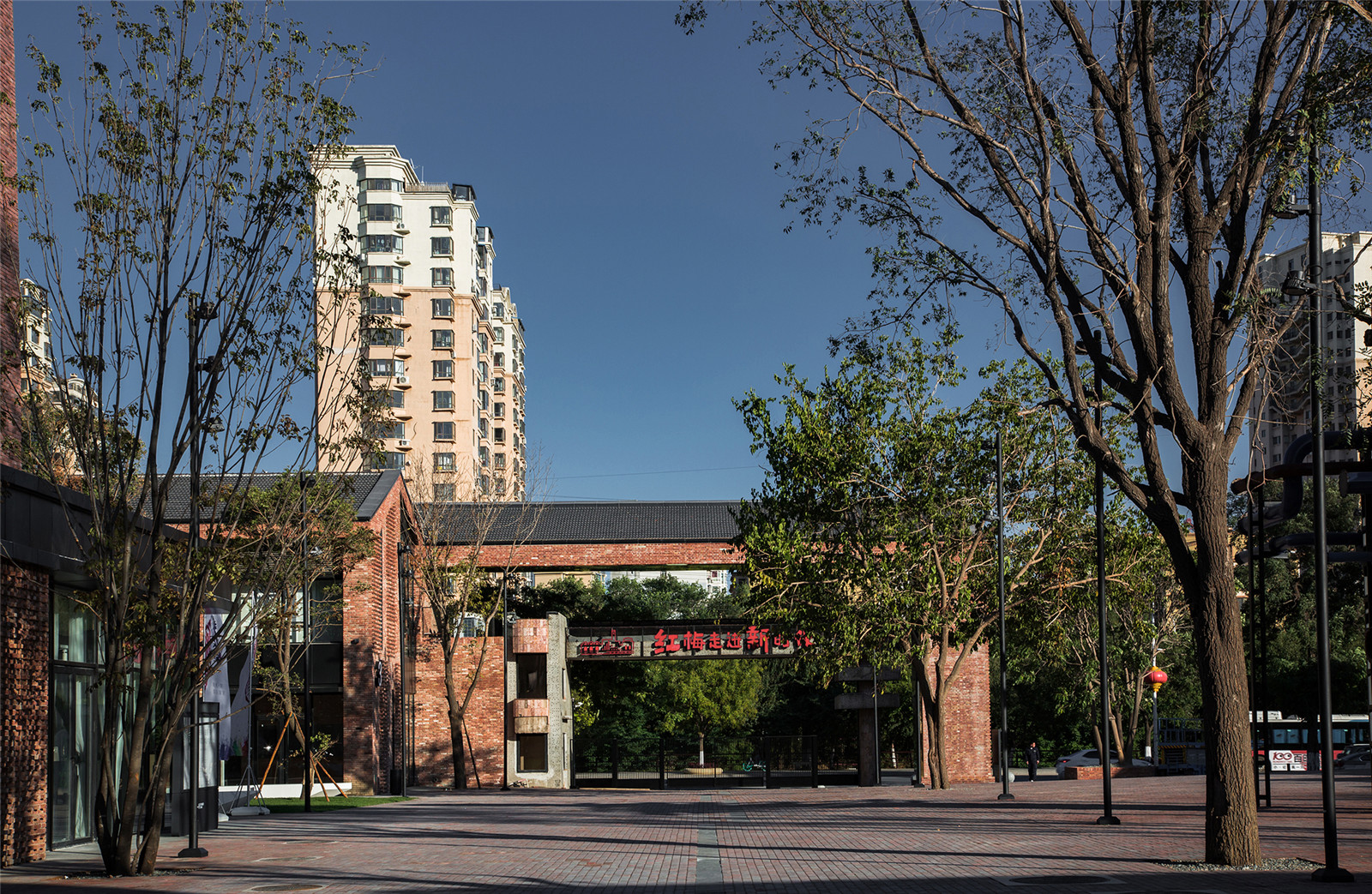
管道���,在從前園區(qū)里穿梭于建筑之間運(yùn)輸著氣體或液體�����,到了今天則運(yùn)輸著歷史和記憶��。它們作為工業(yè)園區(qū)標(biāo)志性的元素����,同時(shí)也可以起到劃分空間���,營(yíng)造空間氛圍���,甚至還可以充當(dāng)園區(qū)中的導(dǎo)向系統(tǒng)����。這些老廠區(qū)中管道的記憶被延續(xù)到新的文創(chuàng)園中��,更多的功能也被融入其中�����。管道上可以設(shè)置座椅����,可以懸掛燈具和海報(bào),也可以根據(jù)需求安裝監(jiān)控?cái)z像和廣播設(shè)備���,將繁雜的各項(xiàng)設(shè)備在管道這個(gè)元素上統(tǒng)一起來(lái)�����。此外管道在新功能的融合上還保持著很高的靈活性�,可以根據(jù)業(yè)主的需求與更多的設(shè)備結(jié)合到一起�。
The gas mains and pipes that used to serve the industrial site are transformed into a historical feature which reinforces its spatial impact and provides orientation; they also serve as seating elements and carry integrated lighting and information elements, loudspeakers, textile banners and signs – a feature that could later be ex-tended as required.
▼穿梭在園區(qū)中的管道
Gas mains and pipes at the former factory’ ?? SHENYANG VANKE

▼改造后的園區(qū)入口
The entrance of the park after renovation ?? LATZ+PARTNER
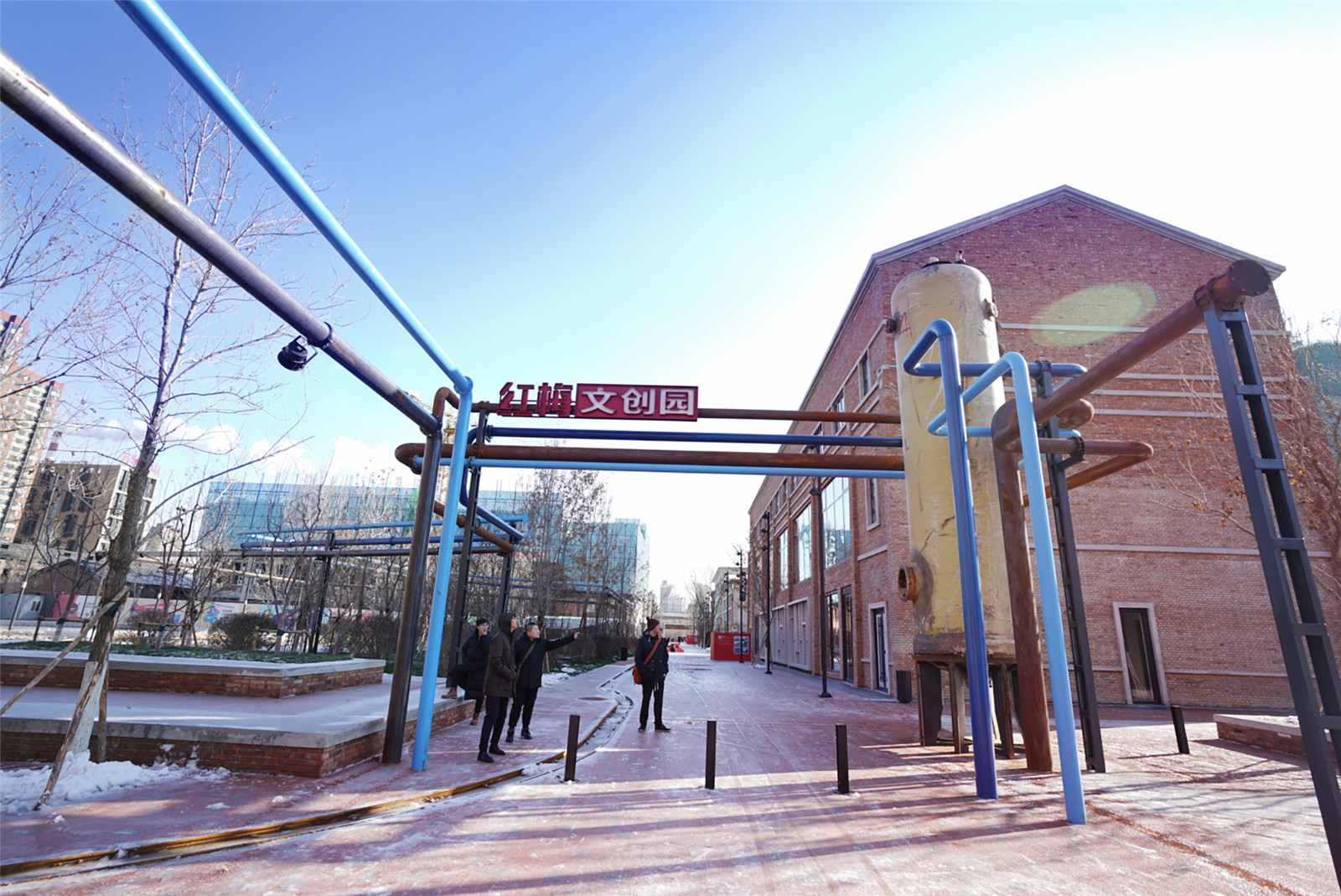
▼賦予新功能的管道與罐
Pipes and tank serve as a signage ?? LATZ+PARTNER
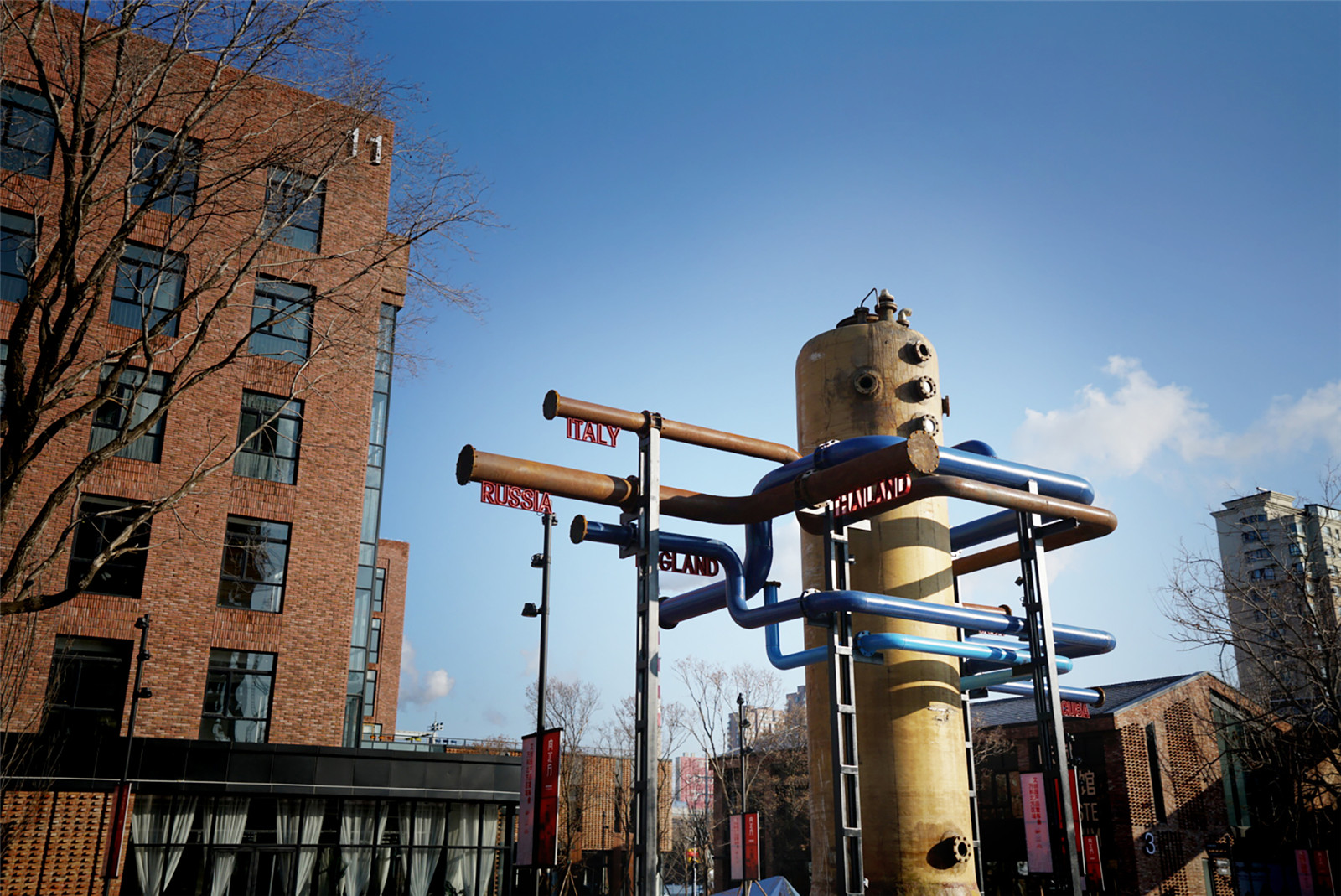
晶體座椅,在園區(qū)隨處可見(jiàn)����。以白色混凝土澆筑而成�����,擁有分明的棱角,抽象于味精晶體的形狀��,它是為紅梅文創(chuàng)園特別打造的���。此外在園區(qū)的主入口處�����,我們還運(yùn)用了同樣的材料��,類似的抽象語(yǔ)言設(shè)計(jì)了象征味精晶體的雕塑����,作為園區(qū)歷史的象征�����,同時(shí)也是園區(qū)不可或缺的標(biāo)志物之一����。
The formula for commercial glutamate inspired us to use long, angular and white prism shapes for the design of our special Hongmei bench that will be installed throughout the site. This theme is also used in a symbolic form in the entrance square.
建筑與開(kāi)放空間 – 形式����,材料以及空間維度的共同對(duì)話
Buildings and public spaces a family of related shapes, materials and dimensions
1.入口廣場(chǎng)將園區(qū)從東側(cè)向城市打開(kāi)����。穿過(guò)園區(qū)的老大門,經(jīng)過(guò)一個(gè)寬大的坡道后呈現(xiàn)于眼前的將是老庫(kù)房以及新的設(shè)計(jì)公社��,這時(shí)我們正式進(jìn)入由這新老建筑所圍合成的入口廣場(chǎng)��。發(fā)酵罐和管道組合而成的塑像統(tǒng)領(lǐng)著廣場(chǎng)�,晶體雕塑從發(fā)酵罐傾瀉而出,它們昭示著這個(gè)老工業(yè)園區(qū)的歷史����。
An entrée opens out towards a large space in the east. A spacious ramp and staircase lead to a large en-trance square with beautiful views of the old and new buildings at the cultural centre. A pipe sculpture alludes to the site’s industrial past, and a large ground relief hints at its former produce.
▼發(fā)酵罐和管道組合的雕塑
A pipe and fermentation tank sculpture ?? SHENYANG VANKE
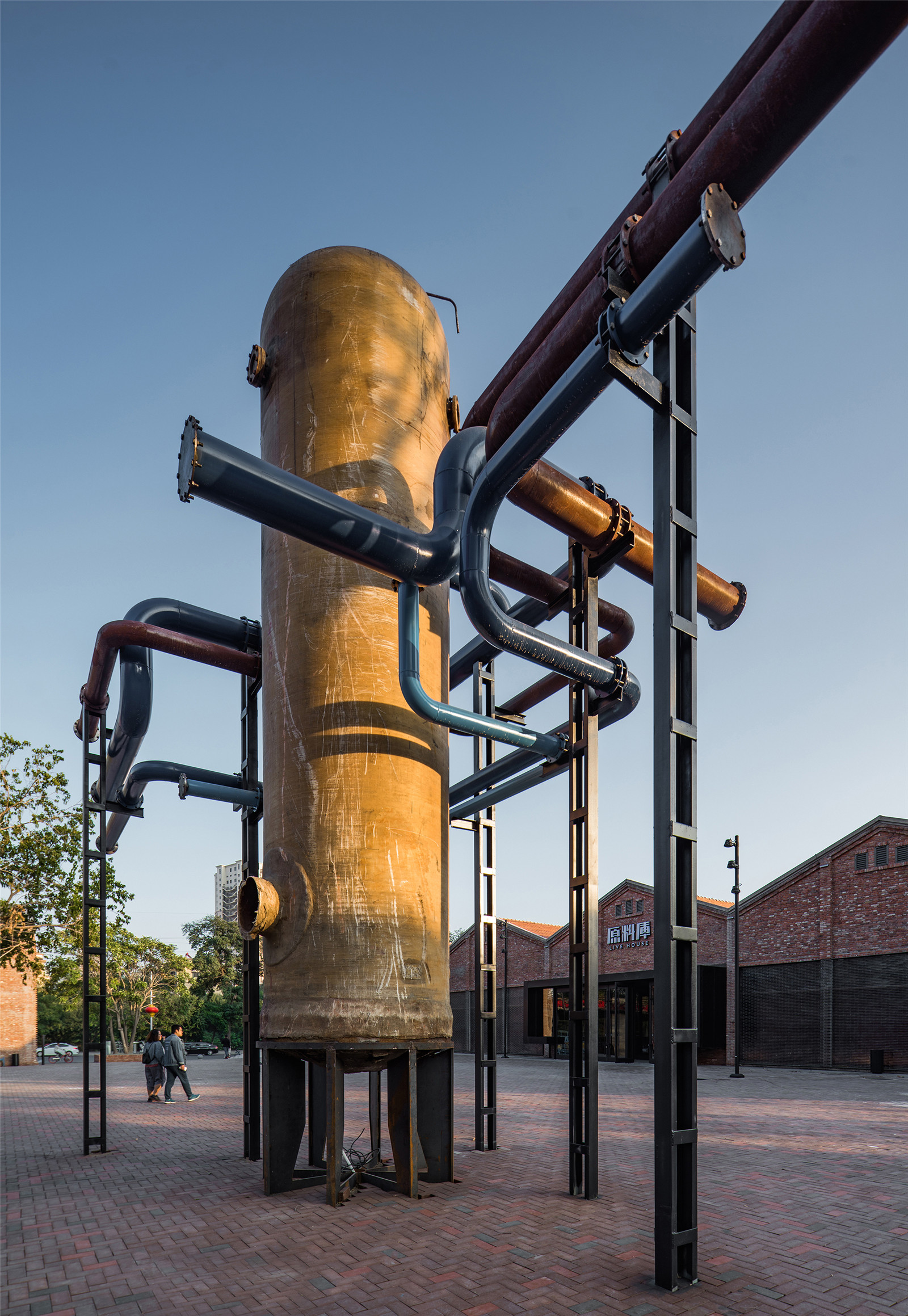
2.設(shè)計(jì)公社辦公樓前庭院里,草坪��,槐樹(shù)叢���,晶體座椅���,為人們提供著稍作停留的契機(jī),以及短暫休憩的空間,
An intermediate space with a usable lawn and ginkgo trees invites people to take a break and enjoy the pleasant surroundings.
▼樹(shù)廣場(chǎng)
Trees square ?? SHENYANG VANKE
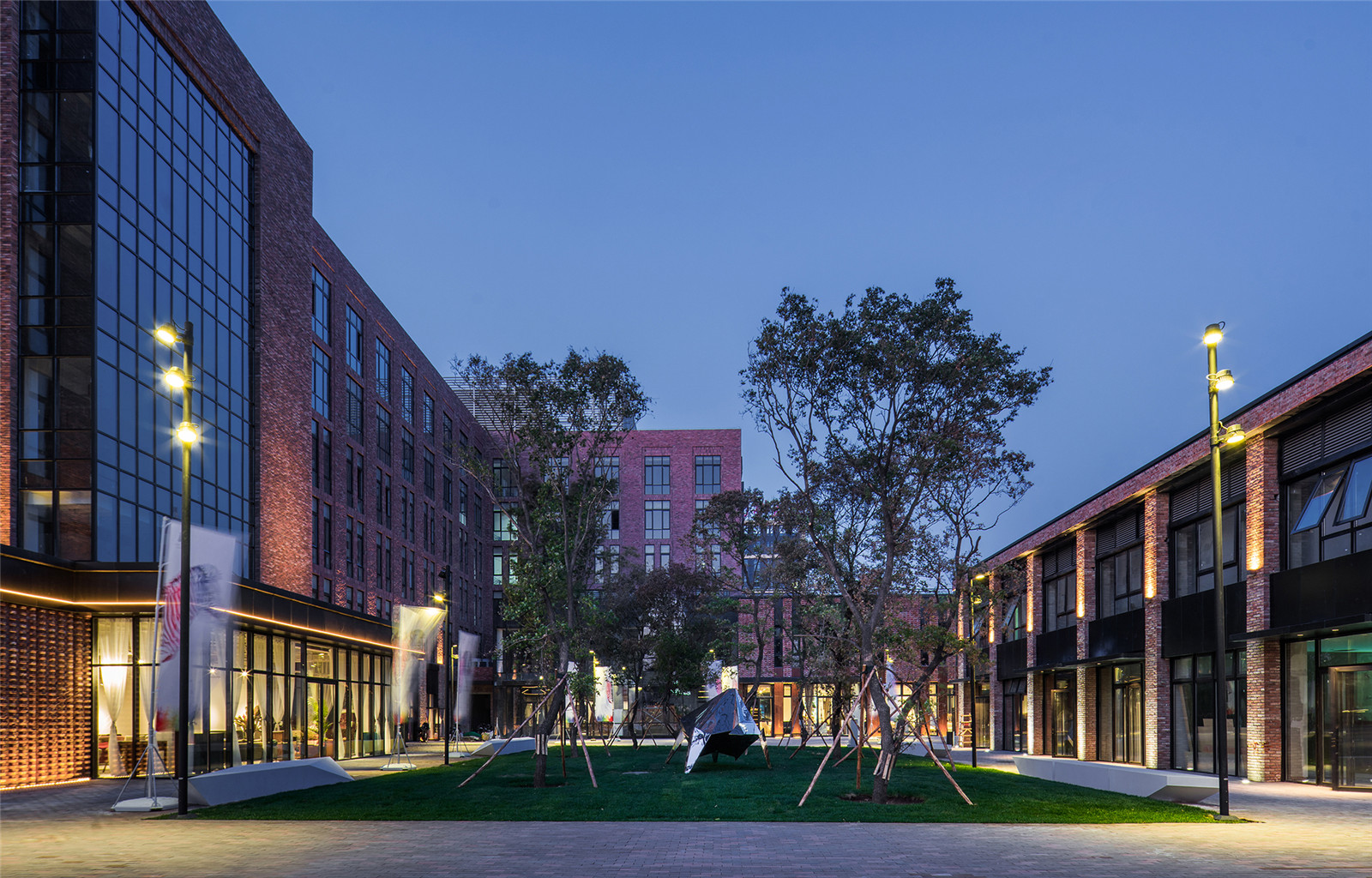
3.在園區(qū)的最西南角為婚禮草坪���。草坪的三面由陣列的銀杏林所圍合���,北面是經(jīng)過(guò)修葺的老建筑���。建筑裝點(diǎn)著草坪��,為人們展現(xiàn)著過(guò)目難忘的立面��,也為婚禮或活動(dòng)提供著舞臺(tái)背景����。也許在沒(méi)有活動(dòng)的時(shí)候���,游人可以在草坪的邊上�,銀杏林蔭下�,找到一處安靜的角落,稍作停留�����。
We designed a wedding garden in the southwest, where the restored buildings are gently framed by densely planted trees which provide a backdrop for memorable photos, and perhaps offer a moment of tranquillity and relaxation.
▼婚禮草坪
Wedding garden ?? SHENYANG VANKE
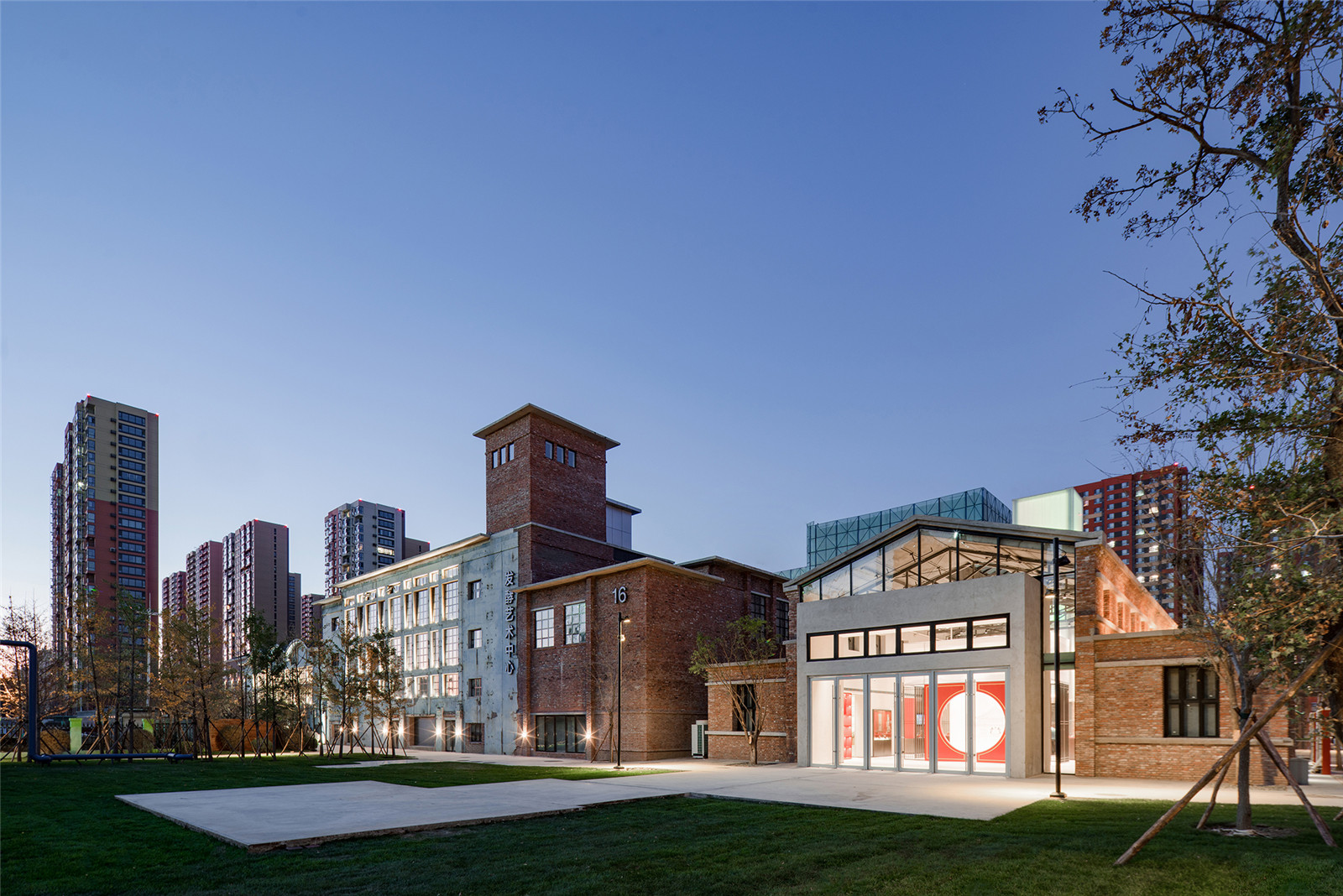
4.園區(qū)的南面邊界上為舊時(shí)供貨物運(yùn)輸?shù)呐f鐵路以及站臺(tái),如今改造成月臺(tái)咖啡館����。火車頭以及餐車車廂被重新搬回鐵軌上��,展現(xiàn)著過(guò)去的情景����,同時(shí)也為游客提供了咖啡廳,以及非常有趣餐飲體驗(yàn)���。
5.穿過(guò)入口廣場(chǎng)����,在園區(qū)中沿著中軸大道漫步�,老發(fā)酵廠房,包裝工廠等老建筑坐落于兩旁��,為人們提供著各式各樣的文化活動(dòng)��。在主軸上人們可以更好地感受到磚面由東到西的色彩漸變����。
Immediately adjacent sits the former railway line and its railway station, a gastronomic highlight. Old carriages and storage sheds offer plenty of space for restaurants and a fun visit.
A promenade takes visitors into the centre of the complex, to the former fermentation and packaging buildings, which now accommodate diverse cultural venues. This is where the change in colour of the brick paving offers a particularly beautiful experience.
▼老發(fā)酵廠房改造而成的藝術(shù)館
Art center transformed from former fermentation ?? SHENYANG VANKE
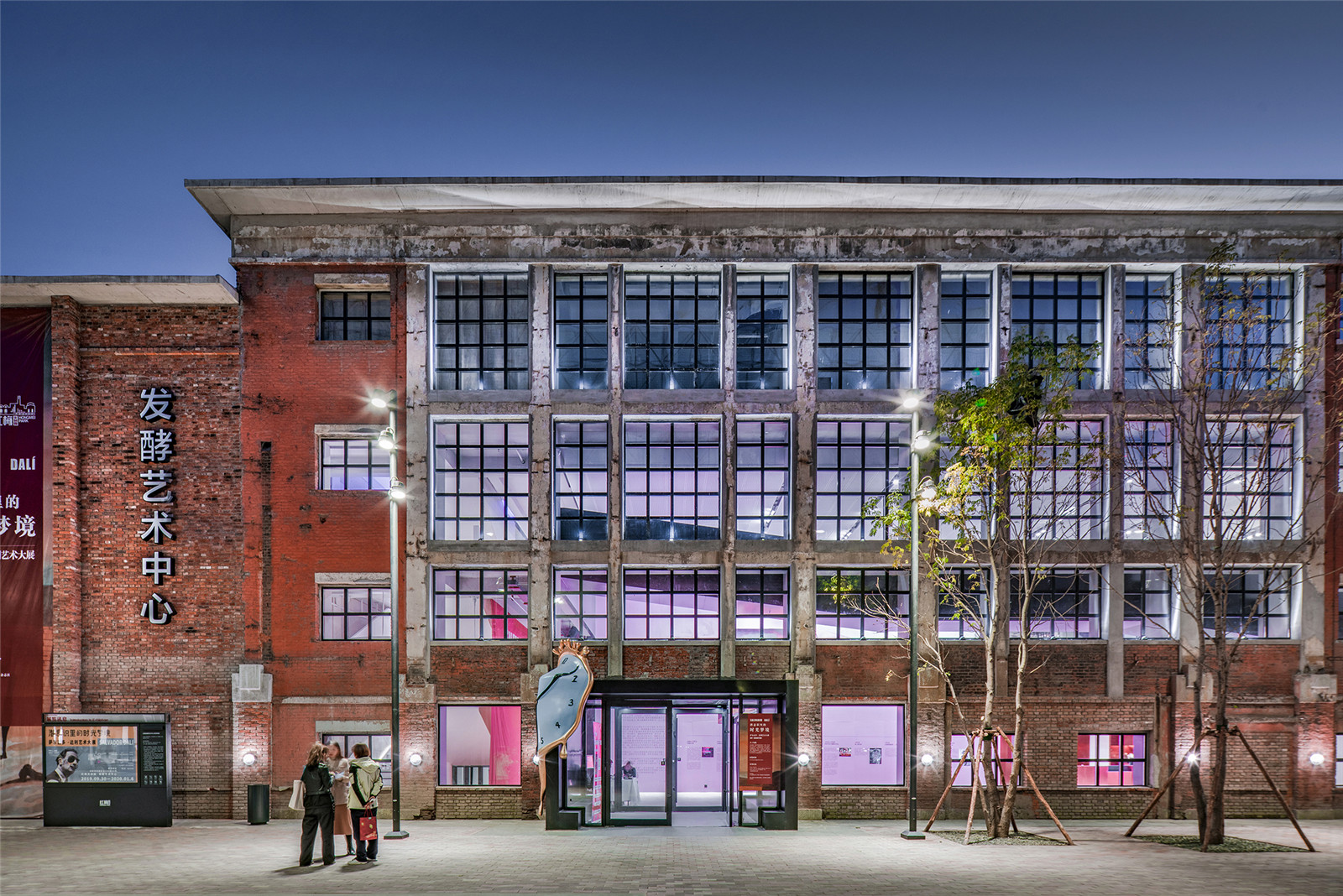
6.水景廣場(chǎng)在園區(qū)的核心位置����。廣場(chǎng)在夏天蓄水的時(shí)候�,它為孩童提供了一個(gè)理想的嬉戲場(chǎng)所。在水面平靜如鏡面的時(shí)候�,周圍的老建筑,樹(shù)木�����,藝術(shù)裝置都將倒影在水里�。當(dāng)有活動(dòng)需要在該廣場(chǎng)上舉行時(shí)或冬日����,水將暫時(shí)排出,廣場(chǎng)則真正意義上成為了可以為活動(dòng)提供空間的廣場(chǎng)�。
The Small Piazzetta with its reflective water surface turns into a ‘mirror square’ in the summer months. Children are invited to play in the water and the beautiful buildings, trees and a special work of art are reflected in it. During events in the square and in winter the water is drained and room is made for fun-fair booths, stalls and small artistic attractions.
▼水景廣場(chǎng)
Water square ?? SHENYANG VANKE
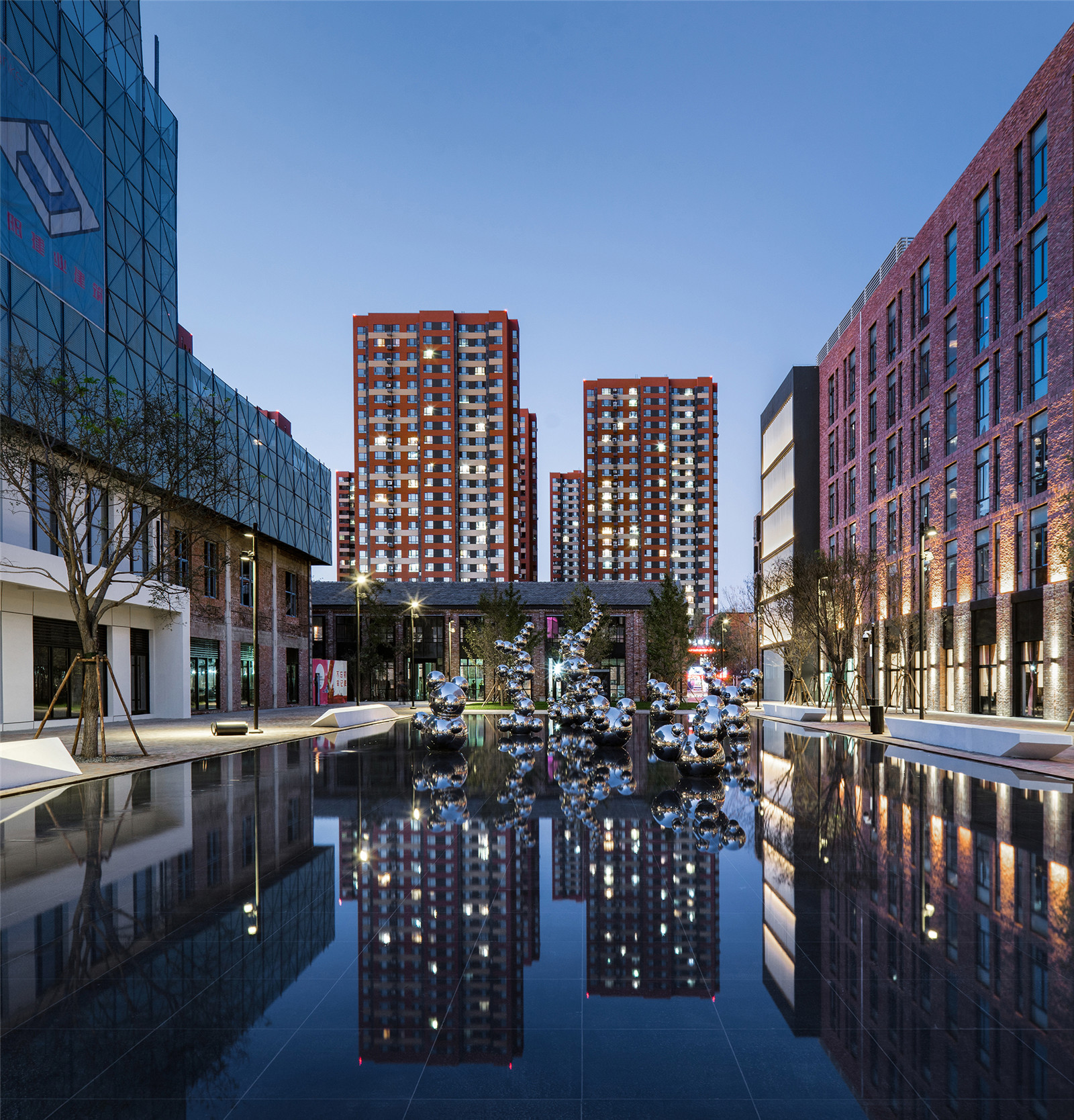
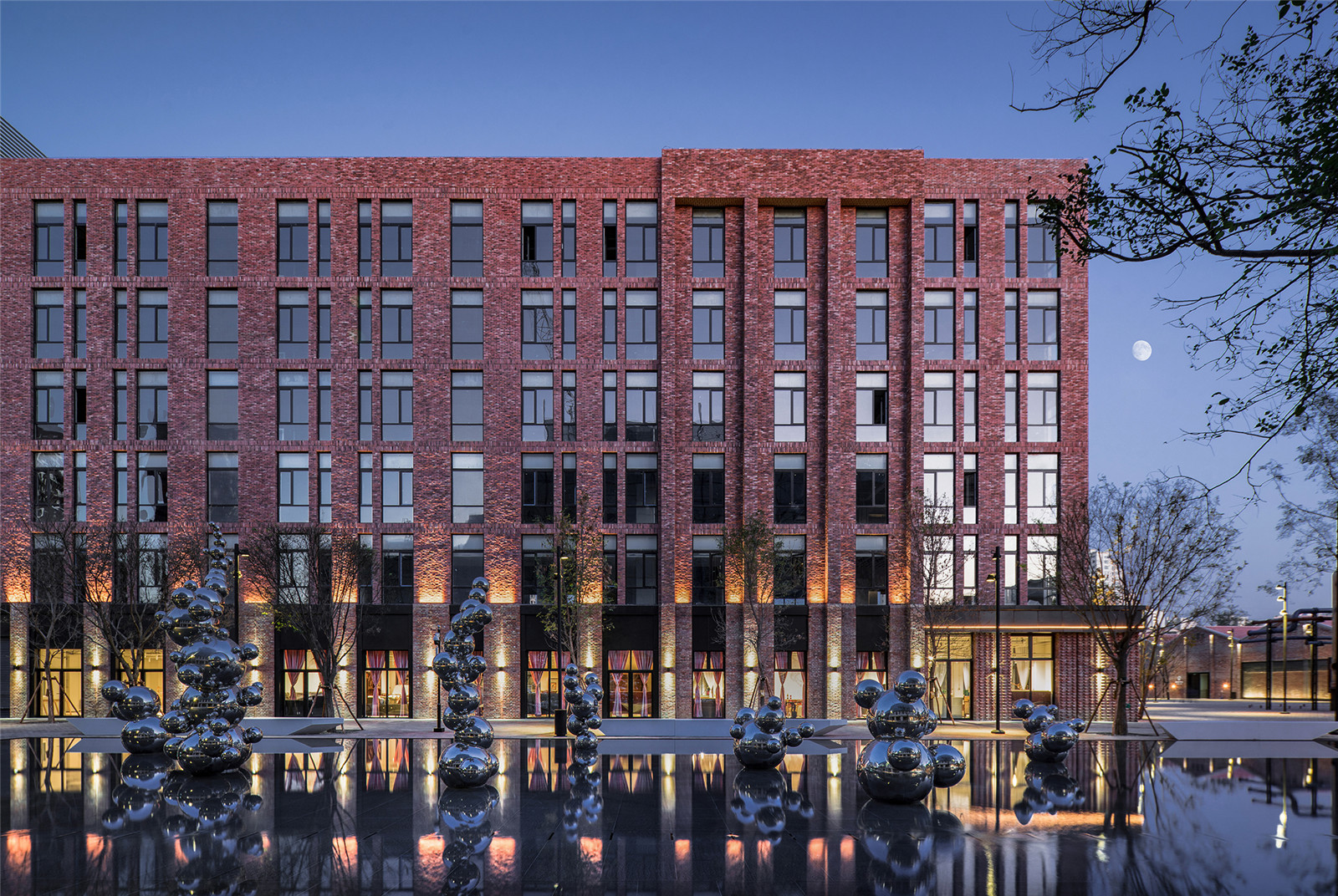
7.北面與中軸大道平行的是餐飲步行街,在街道旁就餐或喝茶����,都是不錯(cuò)的選擇。
A gastronomy alley offers good food and beverages.
▼餐飲步行街
Commercial street ?? SHENYANG VANKE
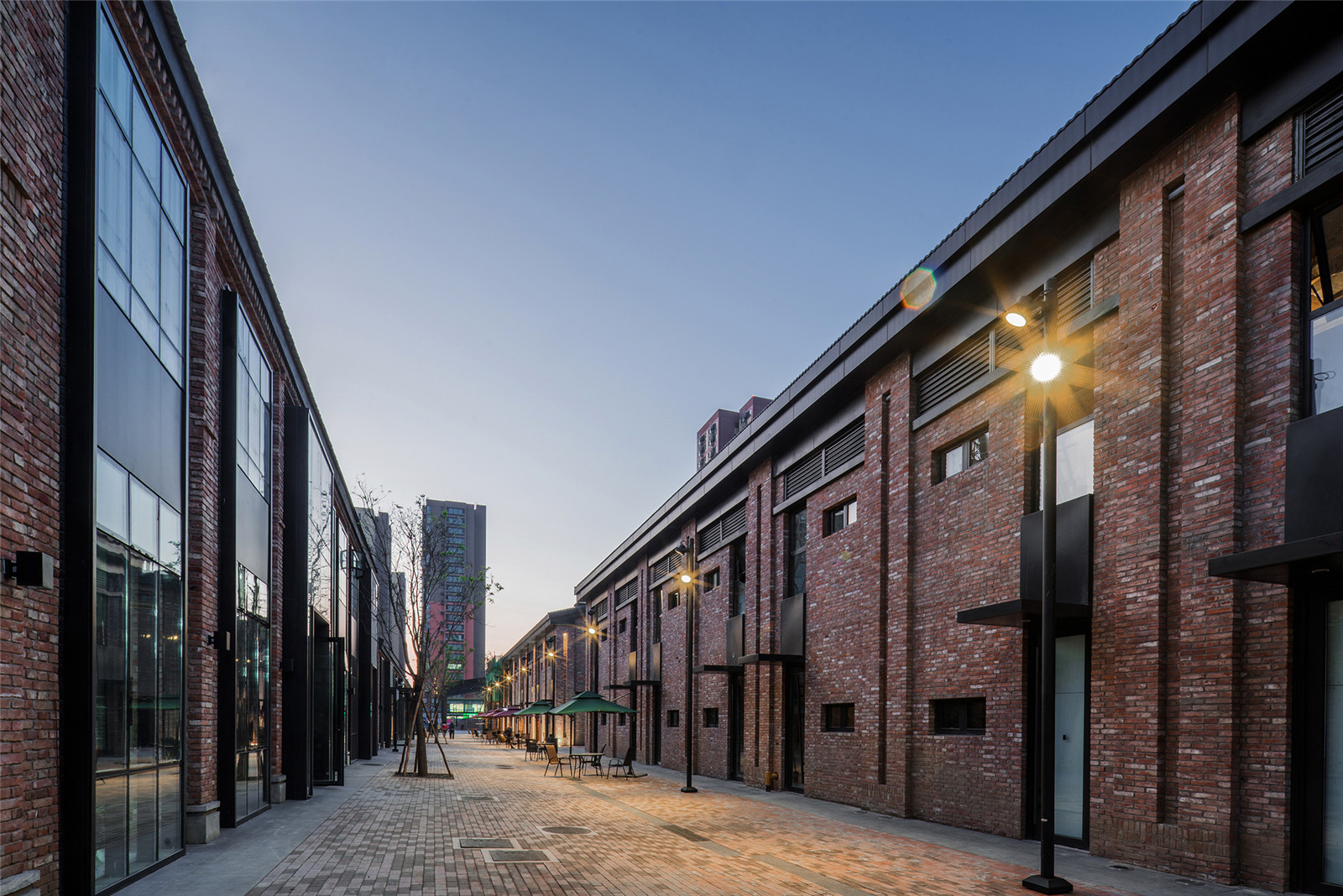
8.園區(qū)西北角的大廣場(chǎng)是紅梅文創(chuàng)園內(nèi)最大的開(kāi)放空間�����,它將為園區(qū)提供戶外大型活動(dòng)的舉辦場(chǎng)地。廣場(chǎng)的南部向北傾斜放坡下沉���,最低處約下沉半米��,由此北面不下沉的區(qū)域則成為了相對(duì)抬高的舞臺(tái)����,下沉區(qū)域則是觀眾區(qū)����,在沒(méi)有大型活動(dòng)時(shí),廣場(chǎng)也可以為周邊居民提供休憩����,娛樂(lè),運(yùn)動(dòng)等場(chǎng)所���。舞臺(tái)北面的廊架不僅扮演著舞臺(tái)背景的角色����,同時(shí)也圍合了廣場(chǎng)空間�,使廣場(chǎng)與北面的城市道路隔開(kāi)。廊架內(nèi)設(shè)有籃球場(chǎng)�����,乒乓球等運(yùn)動(dòng)場(chǎng)地,并可以提供舉辦小型活動(dòng)的可能性��,同時(shí)也不會(huì)干擾大廣場(chǎng)上的活動(dòng)��。廊架上安置了鐵網(wǎng)���,將來(lái)如果在廊架周邊栽種爬藤植物�,廊架將會(huì)被綠植所覆蓋�����。在廣場(chǎng)的西側(cè)是磚砌的高低錯(cuò)落的平臺(tái)����,為人們提供了可以坐下休息的空間���。高低臺(tái)和臺(tái)上的樹(shù)木以及管道一同優(yōu)雅地劃定了廣場(chǎng)西側(cè)的邊界�,阻隔了廣場(chǎng)外車來(lái)車往的喧囂�,界定著廣場(chǎng)內(nèi)與外的空間。
The Great Piazza is the largest open space at Hongmei Cultural Creative Park. The ground level drops slightly to the north and creates a stage. The space is open for all people living in the neighbourhood for meetings, sports, games and unticketed events. Presentations, concerts and theatre plays will also be staged there. Shallow seating steps define the edge of the space in the west trees form a buffer to the surrounding urban area and, together with the pipe system, enclose the piazza with an elegant frame. To the north, a spatial sculpture made of steel sections continues the industrial architecture and creates a per-fect space for ball games, including basketball, streetball, table tennis, etc., and for smaller events. Nets enclose the area and will soon be covered by the lush growth of climbing plants and create a pleasant en-vironment. They also buffer the Great Piazza from traffic noise on the busy streets around the site. Here, too, pipes surround the space and embed this important recreational area within the new cultural centre.
▼多功能廊架
Multi-use pergola ?? SHENYANG VANKE
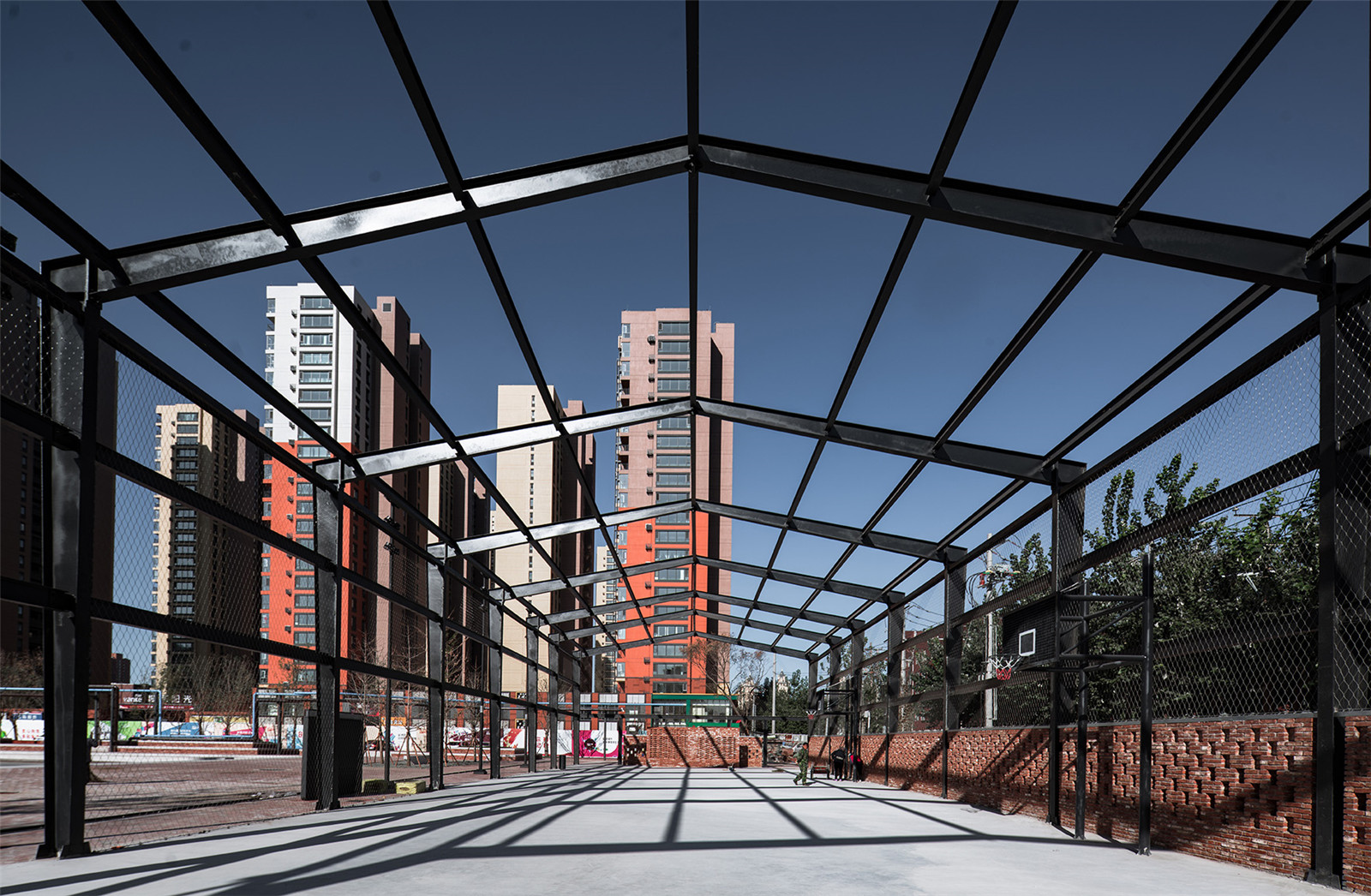
紅梅文創(chuàng)園從現(xiàn)在起以至將來(lái)����,將為人們提供一個(gè)繁華都市中與眾不同的文化活動(dòng)空間����。景觀與建筑相互映襯���,相互融合��,用歷史打造一個(gè)嶄新的未來(lái)�。
Hongmei Cultural Creative Park is a unique cultural quarter for both citizens and tourists in this diverse city. Landscape architecture and architecture work together as a unit and thus furnish this former industrial city with attractive prospects for the future.
項(xiàng)目基本信息
項(xiàng)目名稱: 萬(wàn)科紅梅文化創(chuàng)意產(chǎn)業(yè)園景觀規(guī)劃設(shè)計(jì)
項(xiàng)目地點(diǎn): 中國(guó)沈陽(yáng)
項(xiàng)目規(guī)模: 6.2公頃
設(shè)計(jì)公司: LATZ+PARTNER 拉茨與合伙人景觀規(guī)劃事務(wù)所
委托方:沈陽(yáng)萬(wàn)科企業(yè)有限公司
建成時(shí)間: 2019
主創(chuàng)設(shè)計(jì)師: Tilman Latz
設(shè)計(jì)團(tuán)隊(duì): Ulf Glaenzer, 麥瀚����,謝維肖, Jan Vrabec, Ana Rodriguez-Wiggin, Franziska Brand
合作方(施工單位):沈陽(yáng)綠野建筑景觀環(huán)境設(shè)計(jì)有限公司
圖片來(lái)源:SHENYANG VANKE, LATZ+PARTNER
版權(quán)聲明:本文版權(quán)歸原作者所有,請(qǐng)勿以景觀中國(guó)編輯版本轉(zhuǎn)載�����。如有侵犯您的權(quán)益請(qǐng)及時(shí)聯(lián)系����,我們將第一時(shí)間刪除。
投稿郵箱:info@landscape.cn
項(xiàng)目咨詢:18510568018(微信同號(hào))
 京公海網(wǎng)安備 110108000058號(hào)
京公海網(wǎng)安備 110108000058號(hào)

















